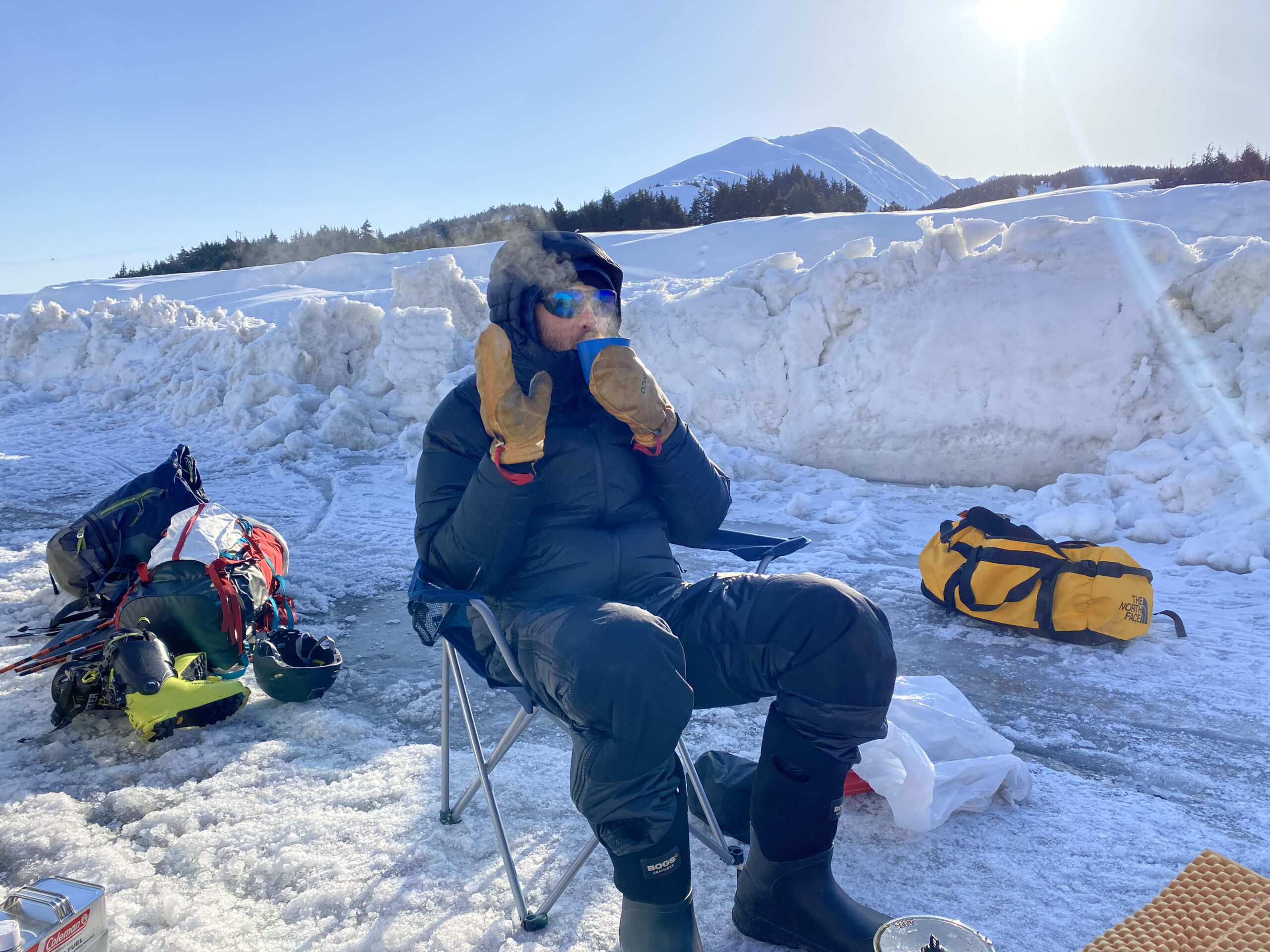
Intro
Most of our reviews are pretty long — and take a long time to produce — because we want to provide enough info for you to actually determine whether the gear we tested will work well for you.
But we get asked to check out an increasingly wide range of products, and sometimes, we just want to tell you about something we’ve been using and loving lately.
So that’s where this monthly series — Stuff We Like — comes in, where we keep you current on a broad range of stuff we’re currently digging.
And if there’s something you love that you think we ought to check out, drop us a note in the comment section below.
Trail Magik Kid Carrier
MSRP: $95
Kristin Sinnott: My son is almost 4 and is no longer quite so eager to hop into a backpack and trek for hours on my back; he’s now strong enough and interested in hiking on his own two feet. I certainly miss the days when we hiked for hours admiring the birds, trees, and animal scat along the trail (and I miss getting in an excellent workout), but I’ve found joy in our shorter adventures this past winter. This summer, I am eager to take him on some longer hikes — hikes that I know will be too long for him to do by himself, but ones where I also know he’ll like to see the final destination.
I have a number of carriers that my son still fits in comfortably, but I haven’t been too inspired to break them out for our recent adventures. The carriers are all too specific for always carrying a child and not quite as conducive to carrying a child every once in a while. The soft-sided carriers I have are lightweight to pack, but they don’t pair well with a backpack, which I need for our food and change of clothes. And the child carrier backpacks are all a bit heavy and require a bit more effort to put my son in and take him out ten minutes later.
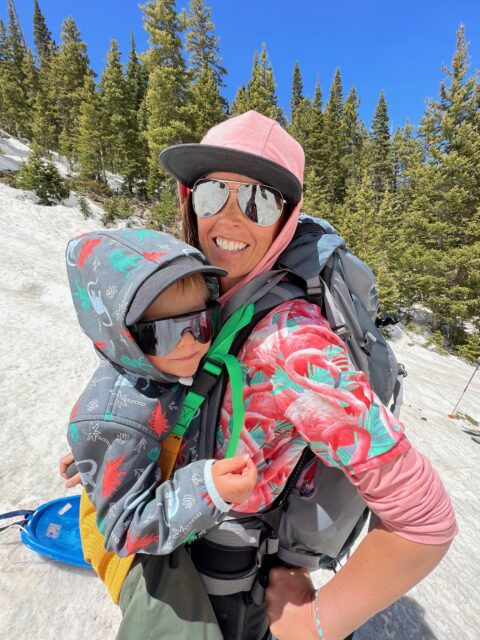
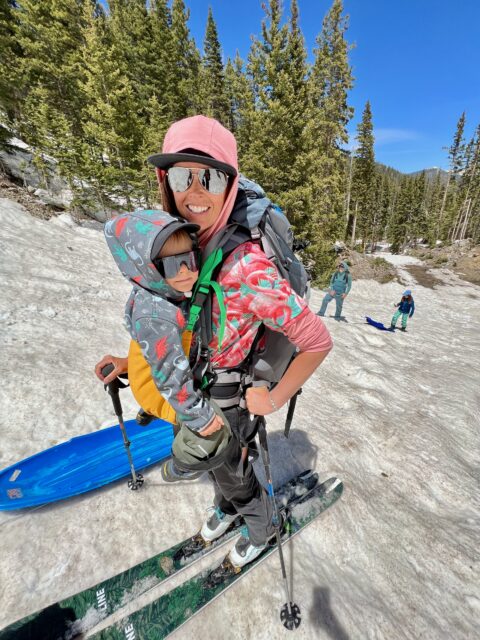
Given that, I’ve been trying to figure out the best option and I wasn’t sure it existed, until I learned about the Trail Magik Kid Carrier. The Trail Magik Kid Carrier is basically a piece of heavy-duty canvas that attaches to your backpacking pack. It’s fairly easy to attach and load your child, especially if you adjust the straps beforehand. My husband and I tested it using different backpacks and it’s definitely ideal for a burly, large-capacity pack like a backpacking pack. When we tried it on a larger-sized but snow-specific pack, all of my son’s weight was put on my shoulders, which exhausted me very quickly. With a backpacking pack that has an internal frame, the child’s weight is more evenly distributed between the hipbelt and shoulders, which makes it much more user friendly.
The best aspects of the Trail Magik Kid Carrier are that it’s light (it weighs less than a pound), compact, and you don’t have to remove your pack to put your kid in it. When not in use, the carrier can be folded up and stored in a pocket of your pack or you can just keep it attached to your pack, which is what I tend to do. My son loves to get in and out of it fairly frequently, so I never really have a chance to fully remove it.
If you’re considering purchasing the Trail Magik Kid Carrier, know that it is not a baby carrier. They recommend you don’t use it for children younger than one year old and it goes up to a maximum weight of 43 pounds. My petite, almost 4-y/o is just over 30 pounds, so I plan on using the carrier for a lot more adventures.
Patagonia DAS Parka
MSRP: $449
Luke Koppa: I’ve owned several different Patagonia puffies over the years, and I’ve loved several of them for different purposes. During our unseasonably warm and dry spring, I’ve been getting out camping more than I normally do, and the DAS Parka has been one of my favorite pieces of gear during these trips.
I’ve finally figured out that, when I’m car camping, I can basically never bring enough warm layers. While I’m not someone who tends to get cold while skiing or doing anything active, I’m almost always cold once the sun goes down and I’m just sitting around and chatting with friends late into the night (and super cold when I wake up, usually way earlier than I’d like). This is even more of an issue these days since our parched forests mean fire bans are so common and I often can’t rely on warming up by the fire. With all that in mind, I’ve been bringing a big, warm puffy like the DAS Parka on just about every car-camping trip I go on, whether that’s in the desert during the spring or in the Colorado mountains all summer long.
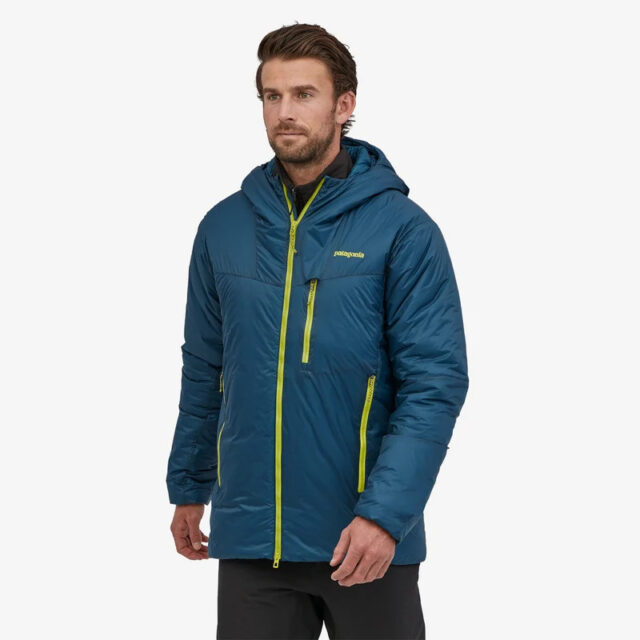
My previous go-to for this use case was an old Patagonia Fitz Roy Down Parka, which was super warm, but it seems to be impossible for me to keep anything dry when I camp, and I always worry about down getting damp. The DAS Parka (featuring synthetic PrimaLoft Gold Eco w/ Cross Core aerogel fibers) is nearly as warm as that old Fitz Roy, but I don’t need to worry about moisture, and its face fabric also seems to be notably more resistant to abrasion, snags, etc. (something that’s also super common for me while camping). It’s made me far more comfortable once the sun dips below the horizon and the temps start dropping fast, and the morning after when I’m fighting to warm up. My only complaint is that the exterior chest pocket is a bit small (cramming an iPhone 12 is doable, but not super easy). Other than that, it’s proven to be a pretty ideal — I can throw it over all my other layers whenever I start getting chilly, I don’t have to baby it that much when it comes to moisture, bushes, tree branches, etc., and it’s super comfortable. If I know the temperatures aren’t going to get below about 50°F, then I’ll opt for the notably more packable and less warm DAS Light Hoody, which is also great.
CAMP G Comp Warm Gloves
MSRP: $99.95
Drew Kelly: In the spring and summer while ski touring and mountaineering, my hands routinely swerve from freezing to sweating to screaming-barfy-ing. So I’m always on the hunt for the perfect pair of lightweight, durable, and dexterous gloves. And when I find the right pair, I become emotionally attached.
Maybe the biggest issue is durability. Often a lightweight glove won’t last longer than part of a season. And while I can certainly warranty them, it seems a little ridiculous and wasteful to just continue getting the same model that I know will wear out in a few months.
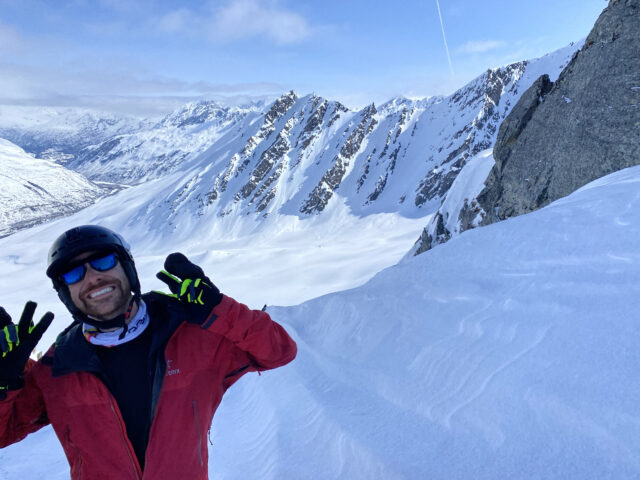
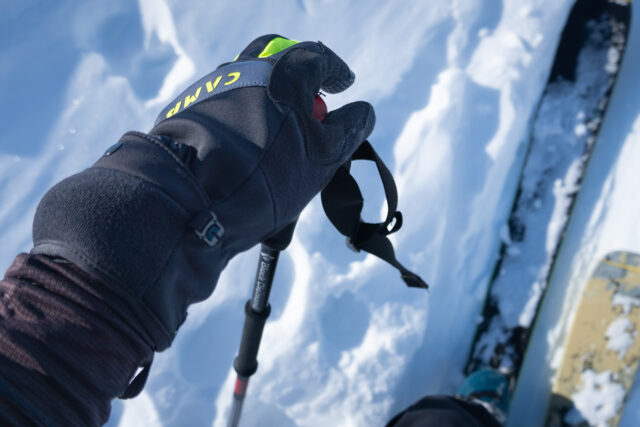
A touring and scrambling partner turned me on to CAMP’s G Comp Warm gloves, and at two months in, I am very impressed. Their fit is very precise and the fingers and palms have rubbery overlays, which make them great for transitioning at the top of ski lines without having to yank them off and rush, and for climbing cold alpine rock.
But CAMP has also sewn in lightweight wrist leashes and pull loops, a humble admission that sometimes, the gloves just do need to come off, and wow is it nice when I’m fumbling with other gear not to have to micromanage my gloves, and to be able to pull them on easily when the fingers are starting to go numb again.
For added versatility across a greater range of temperatures, there is a packable PrimaLoft-insulated wind hood, which has kept me warm at temperatures down to the teens. I’ve often found that these sorts of hood options included in a few companies’ touring gloves negate all grip, but the G Comp Warm’s hood is cut in a way that you can pull out a thumb or other finger individually to dial in the ratio of warmth to dexterity. Finally, there is a very welcomed piece of terry cloth sewn over the back of the thumb and wrist, so that I may wipe the inevitable and profuse snot from my nose in comfort.
So far, these gloves have been breathable enough to use in temperatures up to the low 50’s F, and warm enough down into the teens. I’m hopeful they’ll last me at least a couple years. And if not, then the question remains of whether or not to just continually buy cheap hardware-store gloves every few months because, regardless of how expensive a glove is, they’re going to fail anyway … time will tell.
Cotopaxi Coso 2L Hip Pack – Cada Dia
MSRP: $55
Kristin Sinnott: From long days of travel to short walks down the road with my son, the Cada Dia Coso 2L Hip Pack has been slung across my chest or strapped to my waist. Generally speaking, if I leave the house, the Coso is with me. I started using a hip pack as a sling last summer, but the one I was using (a basic one purchased from Amazon) lacked a lot in terms of functionality. It had one zipper pocket and everything had to go inside the one pouch. Shuffling through it to find my keys always frustrated me, so when I saw the Coso, I was excited to try it.
The Coso has multiple zippered pockets, making it easy to keep small items like keys separate from larger pockets. I love not having to rifle through the larger pouch to find my earbuds or hotel key. I have a number of purses that I love, but since having a kid, I’ve been less inclined to use them since they all make it a little more difficult to carry my son. The sling stays put and is large enough to carry what I need, especially since we are far removed from the diaper phase.
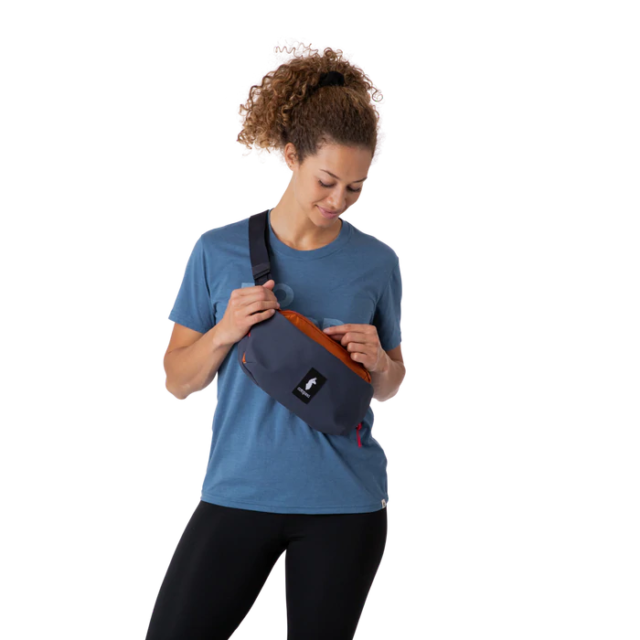

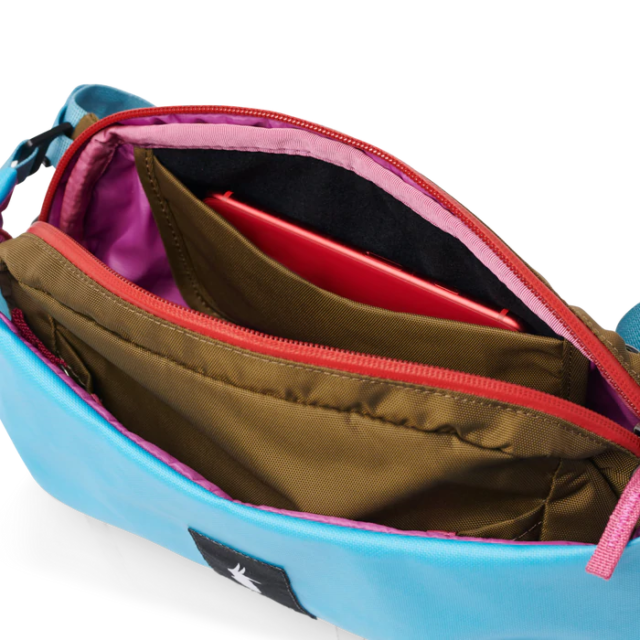
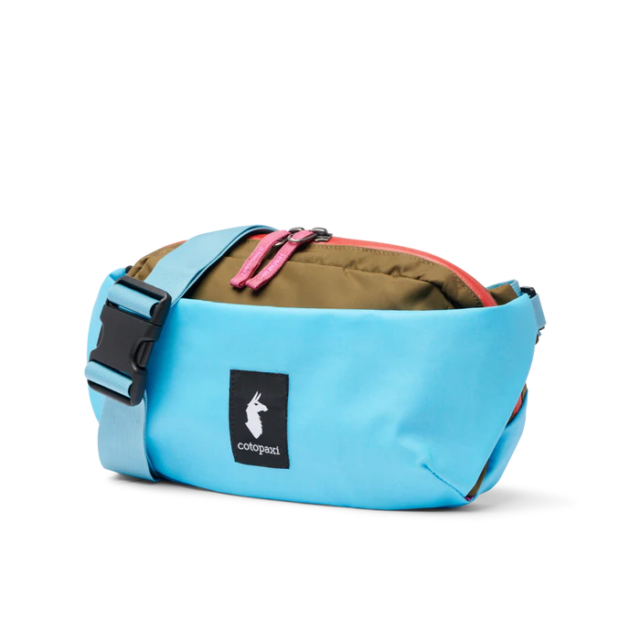
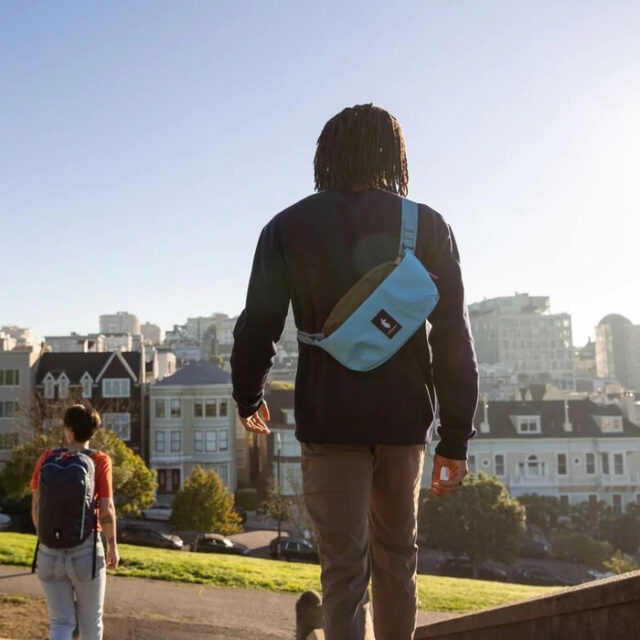
Kara wrote about the Cotopaxi Kapai 3L Hip Pack – Del Dia in the April “Stuff We Like” roundup, and while I haven’t tested the smaller Coso on a bike, I am interested to do so based on her review. Of the four hip packs Cotopaxi makes, the Coso is the smallest, but it’s still large enough to be my go-to bag around town.
Shokz OpenRun Bone Conduction Open-Ear Endurance Headphones
MSRP: $129.95
Matt Mitchell: I listen to a lot of podcasts, far more than I’m willing to admit. Eavesdropping on a conversation is one of my favorite things to do, especially when trail running alone. However, I’ve struggled to justify my listening habits after thinking more about the risks I’m taking by obstructing my hearing in wilderness settings. Common sense will tell you that’s plainly a bad idea.
About a month ago, a friend turned me on to Shokz headphones after I mentioned my reservations about running with earbuds in. Instead of traditional headphones, which use air conduction technology to transmit noise but close off your hearing to the outside world, Shokz models use Bluetooth and bone conduction technology to send sound vibrations to your inner ear, keeping your eardrums open to your environment.
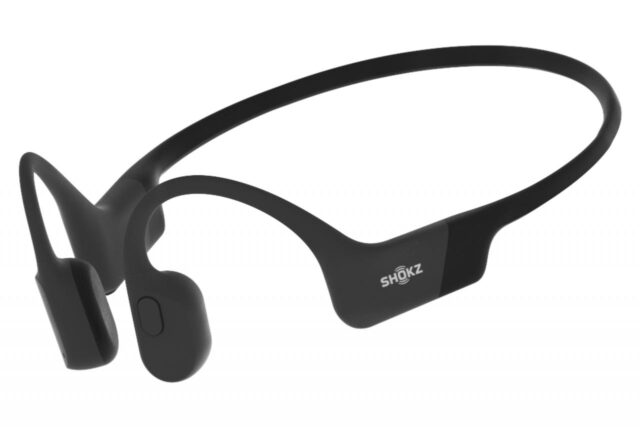
I’ve used the Shokz OpenRuns out on the trails for a few weeks now and I continue to be impressed by how solid of a product they are. The headphones are lightweight, ergonomically designed to fit around your ears, and stay fixed in place while running; the battery life is faithful to the 8 hours Shokz ascribes it (and recharges quickly); they’ve somehow survived my monsoons of sweat; and integrating them with your phone is simple. While the sound quality might not be up to snuff for serious audiophiles, the Shokz OpenRuns provide a pleasurable listening experience with the added peace of mind that you’ll still be plugged into your surroundings.
Topeak Joe Blow Pro Digital
MSRP: $150
David Golay: I’ve really liked several versions of the Topeak Joe Blow Pro floor pump, going back to my days working in a bike shop where we used one as the main shop pump, and the latest Joe Blow Pro Digital is also excellent. It feels well built and solid — the action is super smooth, there’s no slop in the sliding mechanism, and the base is very stable. The grips are comfy, the gauge is easy to read, even in bright sunlight — which has been an issue with some other digital pumps I’ve used in the past — and the chuck is easy to use and seals well on both Presta and Schrader valves. I’m also a fan of the pressure relief valve on the chuck, which makes it easy to let off a little pressure if you overshoot the mark.
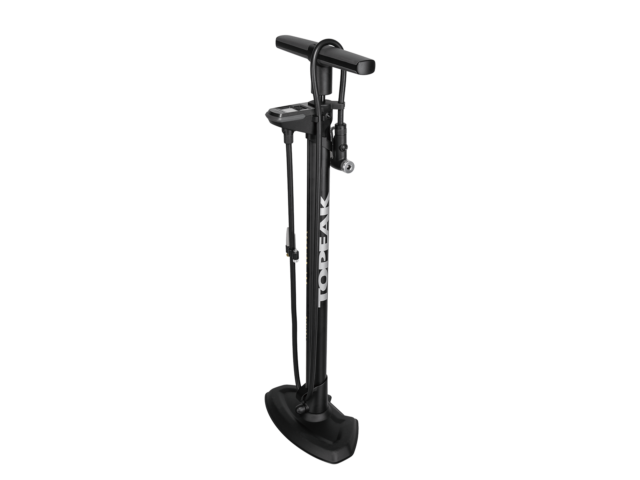
The Joe Blow Pro Digital flows air fairly quickly for a “standard” pump (i.e., one without a pressurizeable canister for seating tubeless tires) but isn’t ideal if you’re trying to seat a ton of tubeless tires. I’ve got an air compressor for that duty, though, and canister-style pumps tend to be clunky and worse to use for everyday pressure top-ups, so that’s a tradeoff I’m more than happy with for my own use. (While we’re on the subject, I’m still a huge fan of the EVT Presta-Only chuck for my compressor.) The easy-to-use chuck, super accurate gauge, and pressure release button make the Joe Blow Pro Digital great for every day pressure checks and top-ups. I’m a big fan.
SPY Flynn Glasses
MSRP: $150
Kristin Sinnott: Very rarely do I go a day without wearing a pair of sunglasses, in part because I live in a region with 300+ days of sunshine, but also because my eyes seem fairly sensitive to sunlight, even on somewhat overcast days. Over the winter and spring, my go-to sunglasses have been the SPY Flynn. More oversized than what I tend to prefer in my sunglasses, I’ve really loved the coverage they provide, and fellow reviewers Sascha Anastas and Kara Williard boosted my confidence with their compliments when they saw me wearing them.

The Flynn glasses aren’t wraparounds, so some light can still seep in from behind, but in general, they provide a great field of vision, the soft rubber is comfortable and doesn’t tug at my hair, and the lenses are clear and a nice tint.
Black Diamond Mega Light 4P Tent
MSRP: $349.95
Kara Williard: Upon receiving this Black Diamond Mega Light “Mid” tent this winter, the prospects of comfortable winter camping seemed a whole lot more feasible. Probably not necessary, but my partner and I opted for the larger size (4-person) versus the smaller 2-person option. What this provided was the most cush and comfortable winter camp situation I’ve experienced, complete with enough space to cook and prepare food, stand up, stretch out, and spread everything out to dry.
This type of “mid” tent works best for winter camping when you excavate snow to build a recessed sleeping space. The setup of the Mega Light tent is so simple and easy, basically consisting of one center pole, and then you can use different methods of anchoring the corners (we used sticks).
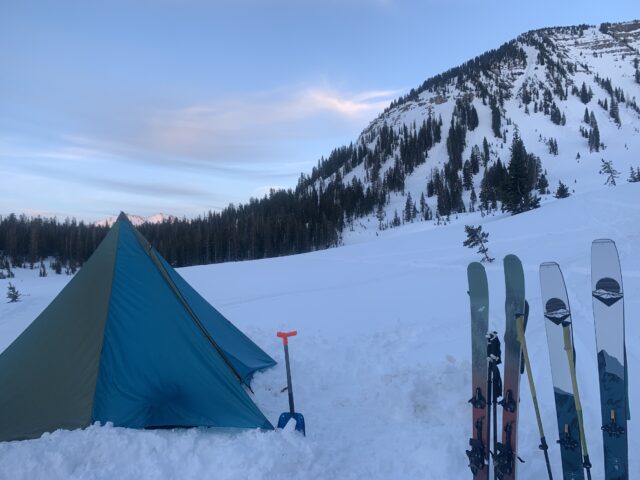
It equated to a warm and cozy shelter through a relatively cold night around 20° F. That said, I have many more missions that I want to use the Mega Light Tent for in the future, some of which I am sure will be colder and windier. Overall, I was impressed with the design, and how remarkably small and lightweight it is. I look forward to more winter camping outings with the Mega Light.
Mountain Hardwear Compressor Pant
MSRP: $175
Drew Kelly: Puffy pants for winter, spring, and fall camping were an epiphany for me this year. That said, I was immediately hesitant about the more popular and delicate down pant options that may get wet when sitting or kneeling, and thereby lose their warmth. So, I went with Mountain Hardwear’s synthetic insulated Compressor Pant.
Not only can I relax about keeping these dry, but they’ve also got reinforced knees and butt to protect those high-wear areas on an otherwise lightweight and packable pant.
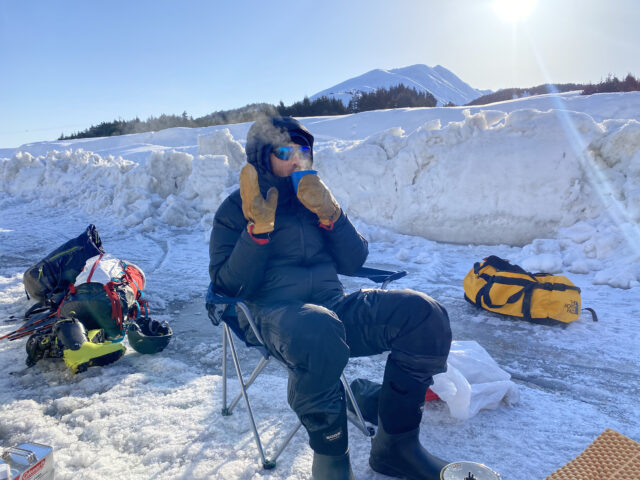
The Compressor Pant also features full-length side zippers to facilitate putting them on or removing them while wearing boots or crampons. I also have appreciated the velcro cuffs that allow me to tailor the pant tension and height to whatever shoe I’m wearing. The size medium seems to fit like a 32×33, but along with those velcro leg cuffs, there are also velcro straps on the elastic waist, which seems like it would stretch to a 34 or cinch to below a 30. And despite being packable to about the size of a 32-ounce Nalgene bottle, the Compressor Pant has kept me warm in below-zero temperatures.
Given their comfort and utility, cold-weather camping just got a lot more appealing. I’m hoping to spend many hours in them over the coming years.
FiveTen Sleuth DLX Canvas
MSRP: $120
David Golay: Five Ten says the Sleuth DLX is a viable option for both everyday and on-the-bike wear, and that versatility is exactly what I’ve been enjoying about them. They’re not as stiff or protective as I’d typically look for in a dedicated mountain bike shoe, but they’re way nicer to walk in than most options that are a significant step up in those regards, and also look like a pretty plain, basic, lace-up street shoe.
So while these definitely aren’t the shoes I’m going to grab for a huge all-day ride, they’re super comfortable to wear off the bike, while still being a grippy, functional option on it, and that’s a great combination for everyday wear, plus riding my commuter bike to the grocery store, plus the occasional short mountain bike ride when I don’t feel like gearing up more completely. And if I still rode a dirt jump bike with any regularity, I think they’d work well, too.

The updated canvas version of the Sleuth DLX is also made in part with Parley Primeblue recycled ocean plastic — which I covered in more detail in my review of the Five Ten Freerider Pro Primeblue — and it doesn’t seem to have any durability downsides from my time in either shoe. The upper feels like a very normal canvas-type material, and the fact that it’s made from a bunch of plastic that literally washed up on a beach somewhere in it is pretty cool.
But mostly, the Sleuth DLX has taken over as my main everyday, around-town shoe, and does a great job there while still being a proper flat pedal mountain bike shoe, too.
Shredly Glove “Krisie”
MSRP: $29
Size Tested: Large
Kara Williard: I prefer my bike gloves to be as minimalistic as possible, especially in the warm summer months. In most cases, I would actually prefer to ride without bike gloves, except that gloves help manage sweat and prevent my hands from feeling icky and dirty while out on a ride. Shredly makes their glove in tons of beautiful prints and designs, all with the same, perfectly simple overall design. This season, I am rocking both the “Krisie” and the “Cama” colorways. I like these gloves because they are thin, breathable, and grippy. They are also surprisingly durable for how simple and lightweight they are. They’re stretchy, easy to take on and off, and never feel stifling during the hotter days, but I also found them to provide enough warmth and protection for rides down to 40° F.
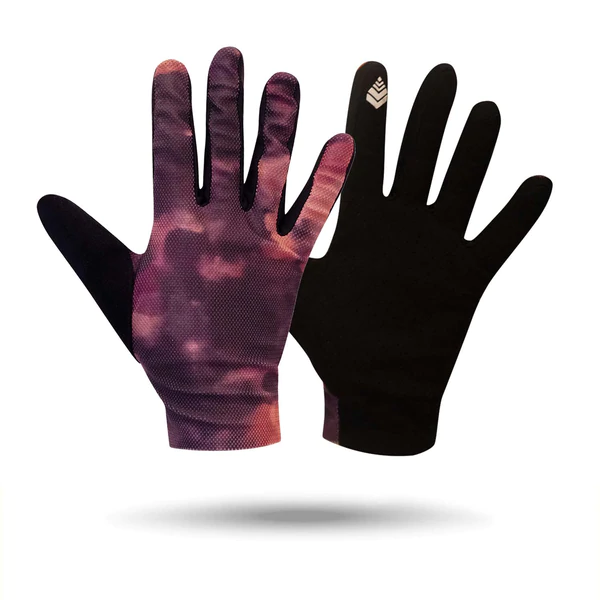
I like the small details of silicone for extra grip. The main downside to the glove is that it doesn’t work on my touchscreen, which has only been a slight obstacle when I am frequently looking at my GAIA app for navigation. I also wouldn’t call these gloves highly protective, but for most rides, they have worked for me. Otherwise, Shredly’s gloves are a great match for my minimalistic needs and preferences for bike gloves — and they are so beautiful and look great with most of my kits. With six available sizes, Shredly points out that their gloves will fit most hand sizes, including kids.
Carve Designs Leah Short
MSRP: $58
Kristin Sinnott: I’m not sure what happened, but when I started looking for my shorts this spring, I found very few casual options in my dresser. One of the options I do have is a 5-year-old pair of Carve Designs shorts that I still like, but I wanted something new. The Leah Short caught my eye since it looked casual, comfortable, and extremely flowy. And when it arrived, they were exactly that. The smocked waist has plenty of stretch to it, which allows me to wear the shorts high or low. I’m 5’8” and 125 lbs, and the size small fits me nicely. They did shrink a little in the wash, but not so much to change my opinion of the fit or shorts in general.
The flowy, wide-leg design of the Leah short, combined with the hand pockets (which I love), make the shorts bow out a little around the hips and thighs. This doesn’t bother me at all, but it’s something you might want to consider before purchasing. I have a road trip coming up in a week and I know the Leah short will be coming with me. Comfortable and versatile, the Leah shorts are going to be a go-to for me this summer.
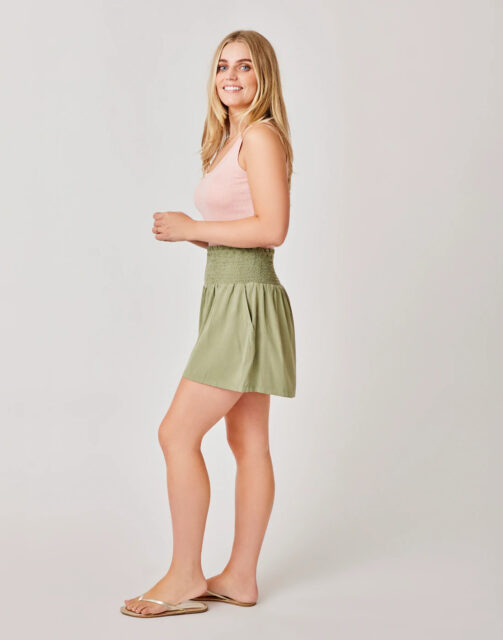
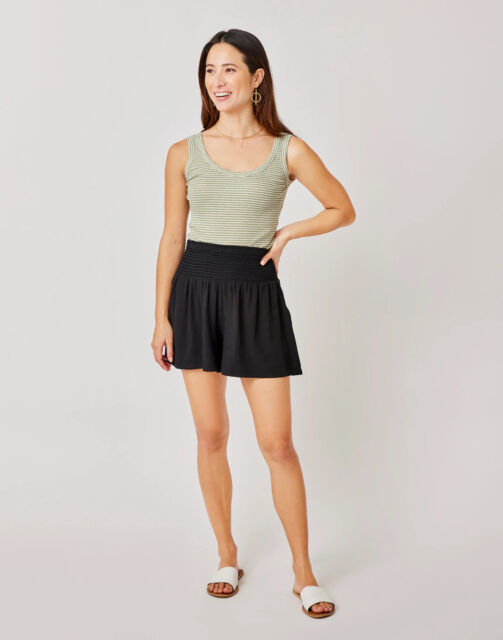
Wild Rye Elorie Technical Overalls
MSRP: $149
Size Tested: 8
Kara Williard: I think it’s the farmer in me, but I am a huge fan of overalls for so many reasons. The reasons are similar to why I prefer ski bibs in the winter; ample pocket space compared to the average women’s pant, no waistband at the waist to dig into the skin, good coverage, and as of lately — cute. Historically, I have been used to really bulky, robust Carhartts and the like, but this spring I couldn’t help but jump on a pair of the new Wild Rye Elorie Technical Overalls. I wanted something lightweight and breathable, but still durable and practical, and the Elorie overall has definitely provided what I was looking for.
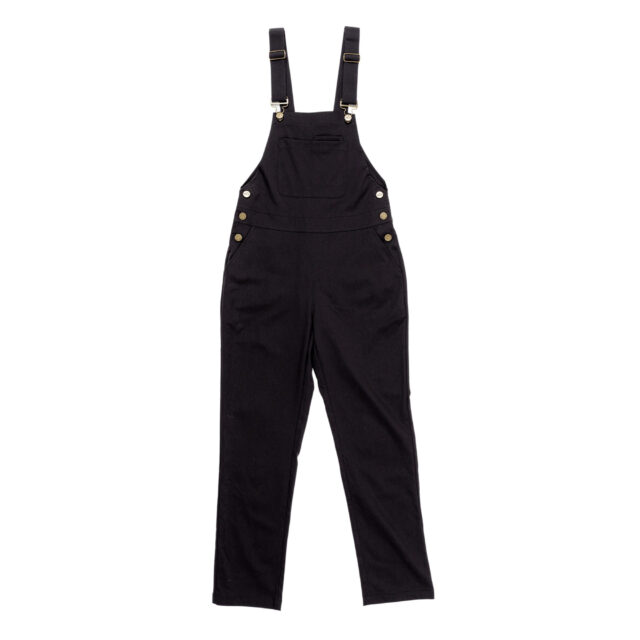
Made with recyclable nylon, the Elorie overalls feature a super stretchy, durable, smooth feel that’s similar to most of Wild Rye’s bike shorts and bike pants (the Elorie has a little less spandex than most of the Wild Rye bike shorts). They are incredibly stretchy and don’t restrict movement whatsoever.
The overalls have proven to be breathable, water resistant, and highly durable, which I have already put to test on the bike, doing farm chores, and kneeling in the garden. Then I give them a wash and pair them with a cute tank and shoes and they create a fashionable fit, as well. The only thing I have struggled with is that the strap adjustments are a little finicky and take some getting used to, in order to get the straps the right tightness. Aside from that, they are a simple, functional design, even when it comes to using the restroom, which can often be a struggle in overalls and bibs as a woman. In sum, for someone looking for an overall for anything from actual outdoor work to biking or hiking, or just to wear around town, this is a great, versatile option. They also run true to size; the size 8 fits great, which has been my size across all Wild Rye apparel I have tested.
SRAM AXS Rocker Paddle
MSRP: $21
David Golay: SRAM’s AXS wireless drivetrains — including the newer, more affordable GX version — shift extremely well, but I haven’t ever gotten along all that well with the ergonomics of the original shifter paddle that they come with. The positioning of the paddles isn’t great for my thumb, and even after spending a lot of time on a number of AXS-equipped bikes by now, I haven’t ever gotten 100% used to the positioning and still find myself missing shifts from time to time.
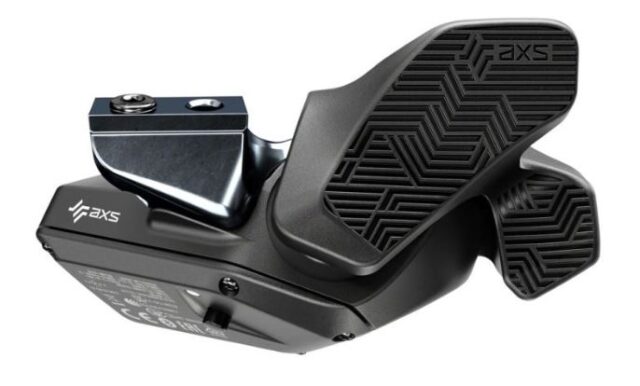
The newer AXS Rocker Paddle totally solves those issues for me. It’s available on its own, as a replacement for the physical paddle on an existing AXS controller, or as an option on a new one if you’re starting from scratch. At least for me, the ergonomics are way, way better. The new version emulates a conventional trigger shifter a lot more closely, and the two paddles are more clearly defined and easier to find by feel while bouncing down the trail without accidentally making an unwanted shift. It’s a big improvement in my book.

Ok, Kristin just became my least favorite Blister reviewer.
‘300 days of sunshine’. Rub it in won’t ya!